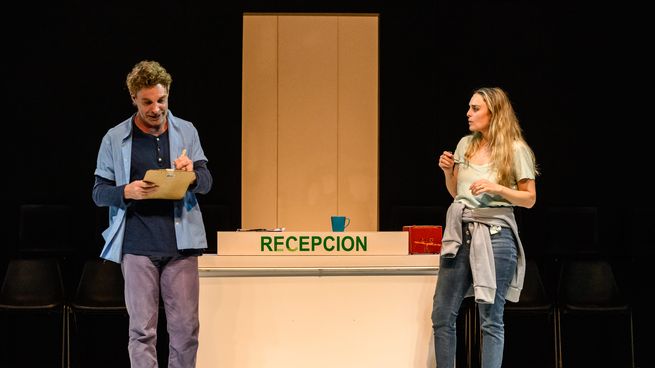Returns “people, places” after passing through the official circuit, with functions on Tuesday of July at the Astral Theater. With Florencia Otero, the work written by Duncan Macmillan is directed by Julio Panno and cast composed of Carlos Kaspar, Nelson Rueda, Estela Garelli, Diana Santini, Santiago Racca, Sara Cordoba, Estefanía D’Anna, Roco Sáenz, María Latzina and Fiore Provezano.
During July it is presented “People, places & things” Tuesdays at the Astral Theater. Winner of the ACE Awards for Best Drama and/or Dramatic Comedy and Protagonic Actress Florence Oterothe work written by Duncan Macmillan Explore the limits of perception and reality around an actress in rehabilitation. When poisoning feels like the only way to survive in the modern world, how is it possible to recover? The pressure for success, the need to fit into certain social standards and the search for one’s identity are issues that resonate.
The content you want to access is exclusive to subscribers.
He was acclaimed for his bold approach to addiction and identity in London and New York, here directed by Julio Panno and cast composed of Carlos Kaspar, Nelson Rueda, Estela Garelli, Diana Santini, Santiago Racca, Sara Cordoba, Estefanía D’Anna, Roco Sáenz, María Latzina and Provencano Fiore.


Management assistance is Virginia Magnago, The choreography of Gustavo Carrizothe original music of Taiu, The design and sound setting are Nahuel Martínezthe audiovisual design is Diego “Rosca” Rzek, The lighting design of Adrián Grimozzi, The costume design of Alejandra Robotti and the scene design of Florencia Tutusous. We talked with Knoll.
2025-04-08-ctba-theater-Sarmiento-Personas-and-Cosas-Esayo-General-Foto-Manuel-Pose-Varela-16 -__MPV7154.jpg

Journalist: What do you attribute the success of this work that passes from the official circuit to the commercial?
Flor Otero: I think it has to do with respect, with which the issue of addictions is treated and that people see it. It is disruptive, daring, moving, deep and with an irreverent humor that makes it different.
Q.: It generated great stir for its theme, what are its main topics and how are these characters?
F.EITHER.: The work mainly addresses the rehabilitation process of an actress who collapses for drug abuse. But with that excuse is immersed in a criticism of the global health system, to the ruthless look of people towards addicts, the limits of the perception of reality, trauma and how overwhelming reality is for everyone.
Q: What challenges are involved in the passage of the official circuit, although it was co -production with the CTBA, to the Astral Hall?
FO: As an actress, the challenge is to keep honesty and truth in a greater distance with the viewer since it is a huge room. As for the productive, the challenge is to sustain the risk outside the “hug” of the complex that contains the San Martín Theater. But we know that there are many people stayed wanting to see it so we deserved some last 4 functions on an alternative day and on Corrientes Street.
Q.: How did you live the Martín Fierro ceremony to the theater where the National Theater Institute was asked for?
FO: It was beautiful to see such a large unit supporting the INT. It cannot be paraded. It is crucial for the Argentine theater, for our culture. It encourages and supports independent theater activity, promoting not only production but also the training and dissemination of works nationwide. Today, studying dramaturgy in the EMAD, with my classmates we participate in all the moves that we can to sustain it and also sustain the ideas posed by independent theater from its courage, which does not always have commercial theater.
Source: Ambito
I am an author and journalist who has worked in the entertainment industry for over a decade. I currently work as a news editor at a major news website, and my focus is on covering the latest trends in entertainment. I also write occasional pieces for other outlets, and have authored two books about the entertainment industry.




